The buzz of the bees is a welcome sound in the garden, and the sight of fluttering butterflies makes us feel good about spending time outdoors.
But you don’t have to overhaul your space to encourage pollinators into your garden – instead, fill your beds and borders with plants they like. Bees can see the colour purple more clearly than any other shade, so here are some suggestions for flowers that will attract them into your garden.
Brighten your borders
If you’re going for a classic cottage look, catmints have got you covered. The gentle, endearing, floppy flowers of Nepeta ‘Weinheim Big Blue’ will feel right at home in the front or middle of your border in a sunny or slightly shaded spot.
They flower from June to September, when they will be appreciated by bees, butterflies, beneficial insects and other pollinators. But you will also be able to enjoy their strong, lemony scent, if you plant them alongside a winding garden path.
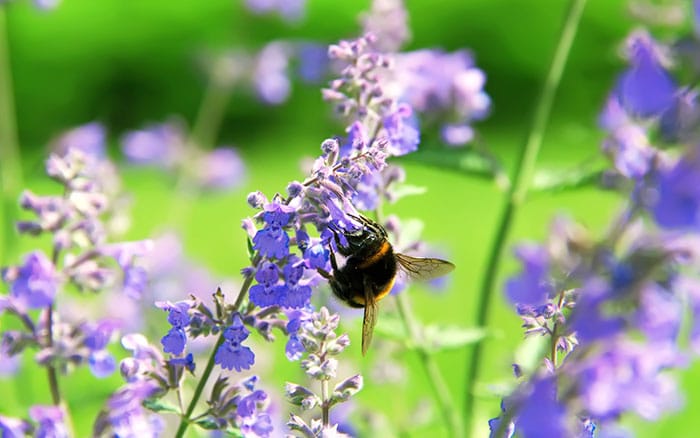
The nectar-rich flowers of Salvia ‘East Friesland’ also make them great for pollinators. This hardy variety is also happy when grown in containers.
Removing the flower spikes as they fade will keep them flowering so you and the bees can appreciate them for longer.
Towering beauties
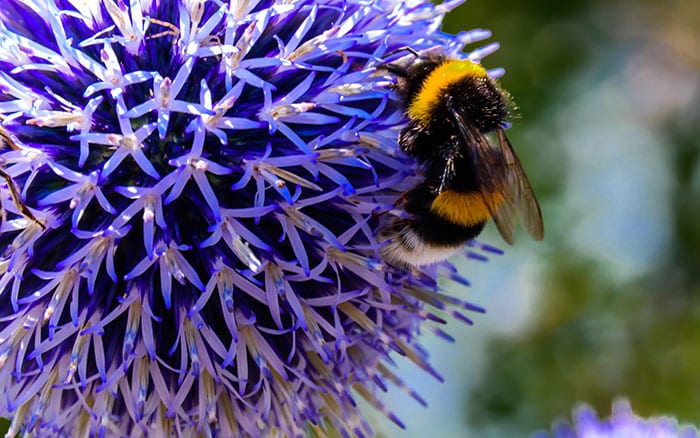
Add some cool tones to your Mediterranean-style space with Perovskia ‘Blue Spire’. Their delicate, violet-blue flowers are sure to relax you and their silvery-grey stems grow to more than 1m tall.
Paired with some ornamental grasses, the textures complement each other beautifully. Butterflies will happily pay these flowers a visit so you can watch them flutter about – and relish in the aroma of the foliage – while enjoying an al fresco dinner on your bistro set.
The rounded spiked flower heads of Echinops Ritro (globe thistle) ‘Veitch’s Blue’ will add some architectural interest at a height of up to 1m.
In a sunny spot with well-drained soil, the bees, butterflies, and beneficial insects will flock to them. Encourage a second round of blooms by cutting down the plant after it has flowered in the summer. Even without the flowers, the dramatic foliage is enough to bring impact to the garden.
Here for the herbs
Lavender – which is well known for its fragrant flowers and foliage – is an easy-to-grow shrub which thrives in full sun, and its purple tones and spikes of flowers are incredibly inviting to bees.
If you grow it in abundance or have lots of other pollinator friendly plants in your garden, use some lavender sprigs in your kitchen.
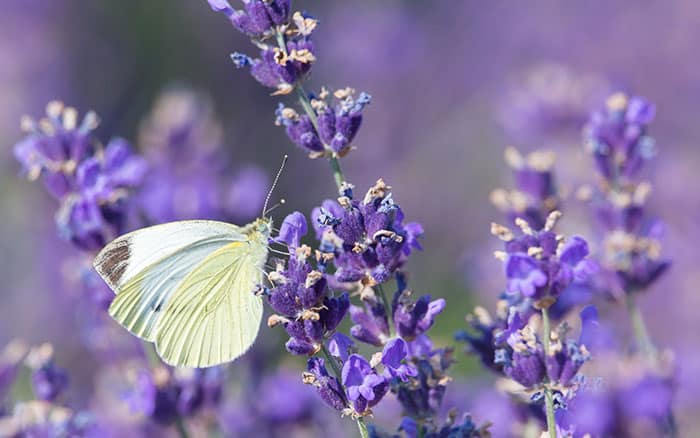
You can make a lovely lavender syrup to add to cocktails, or simply add the lavender to your lemonade. The fragrance of this shrub will help you chill out and relax, too – its soothing nature is why it is used in so many bath and body products.
Evergreen rosemary also looks good all year round and will be right at home in an easily accessible container. The pollinators will love it, and you can also harvest the fresh leaves to use in your culinary delights.
Rosemary is a good source of antioxidants, too. These boost the immune system and aid blood circulation.
Shrub sensations
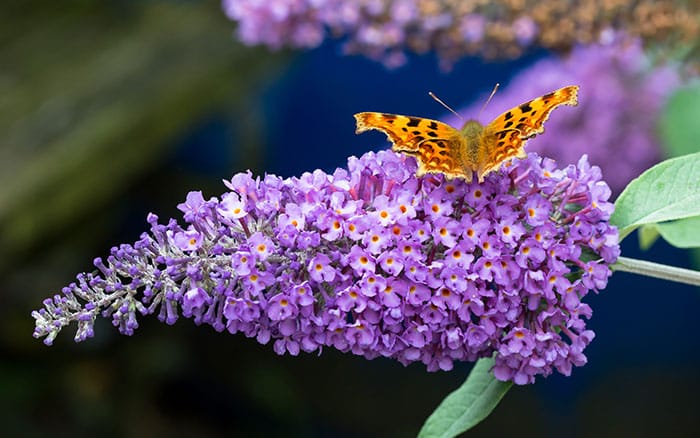
Buddleja davidii ‘Black Knight’ – commonly known as butterfly bush – is a large shrub which blooms long panicles of dark purple flowers. It’s a hardy and fast-growing plant that can grow up to 3m tall.
I remember having a butterfly bush in my garden as a child, and the spectacular swallowtail and pretty peacock butterfly were regular visitors.
An evergreen like the Californian lilac ‘Concha’ produces many clusters of flowers in spring which causes an explosion of indigo colour that is adored by the bees and butterflies.
But even when it’s not flowering, the foliage will provide colour all year round with its arching branches full of dark, narrow leaves. Its dense and bushy habit makes it a great choice for hedging or as a plant for a wall-side border.
So, there you have it – some beautiful purple flowers that will add cool colours to the garden and attract bees.
Tip:
Plants love starch, so keep the water you use to
cook pasta or potatoes in and -as long as it’s not
salted and is left to cool – use it for watering.
They will all play a part in enhancing the garden, soundtracked by the buzz of bees alongside the fluttering of butterflies which can be enjoyed by all.
Happy gardening everyone!
Reader questions
I have heavy, clay soil. Can I still grow vegetables?
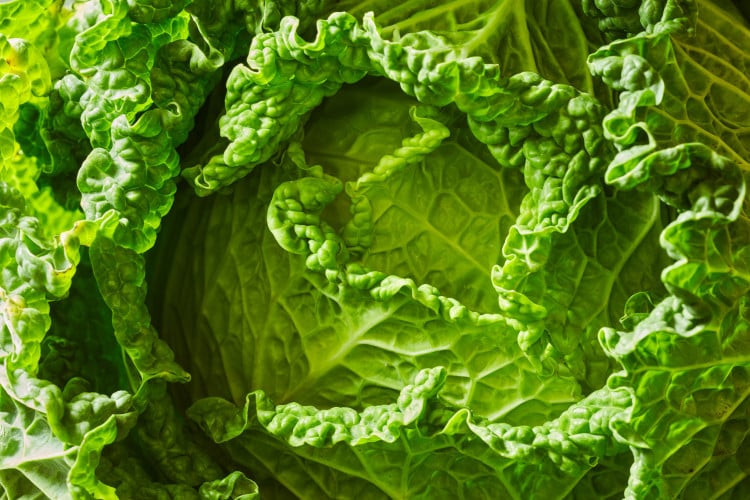
Some vegetables grow well in clay soils, such as cabbages and Brussels sprouts. Other crops with shallow root systems, like lettuce and chard, will grow in clay soil because the soil retains moisture well. Alternatively, build some raised beds which can be filled with topsoil and get growing that way.
How can I keep my garden pond looking pristine?

Keep topping up the water levels because it may evaporate in the hot summer sun. It’s best to use rainwater that has been collected in a water butt but if that’s not possible, fill a container with tap water and leave it outside for around 24 hours. This is also a good time to remove any decaying plants and algae in your pond.
David Domoney is a Chartered Horticulturalist, Broadcaster, and Author. David has worked with a number of the UK’s leading garden retailers as a plant buyer and strategic consultant. With more than 30 years experience, in horticulture, David is as passionate about plants now as he was when he bought his first plant at a village fete.

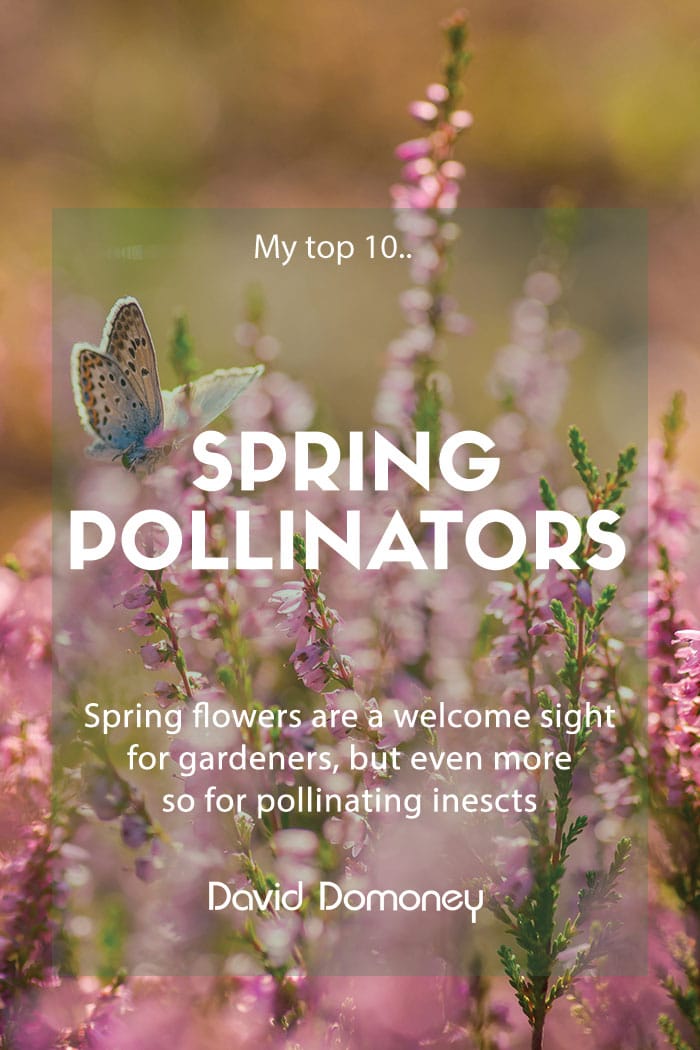
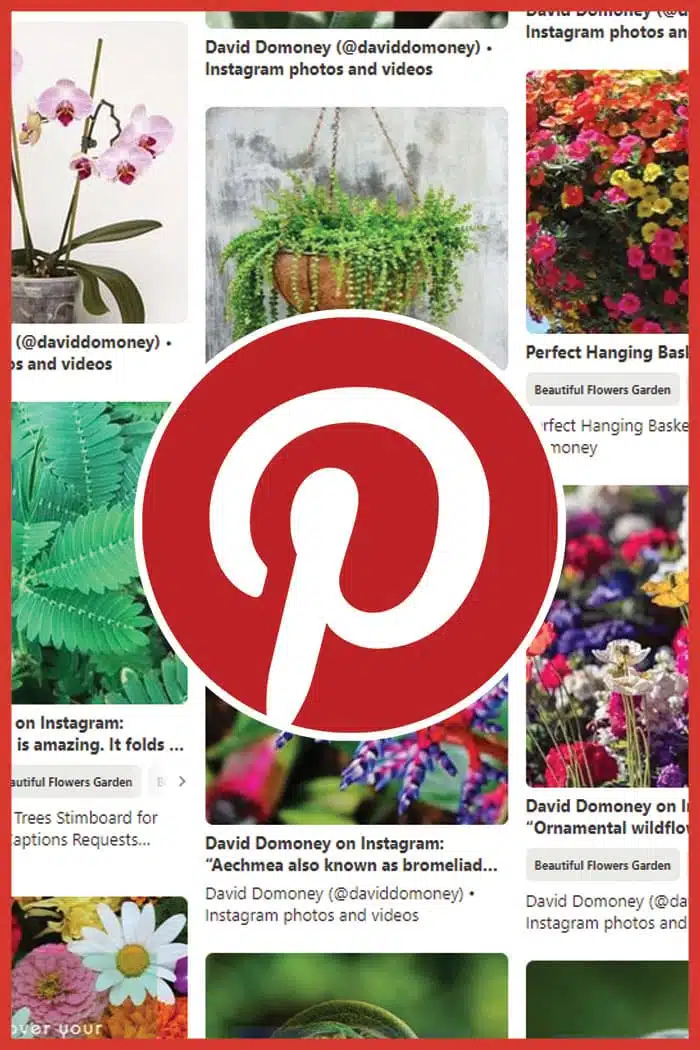

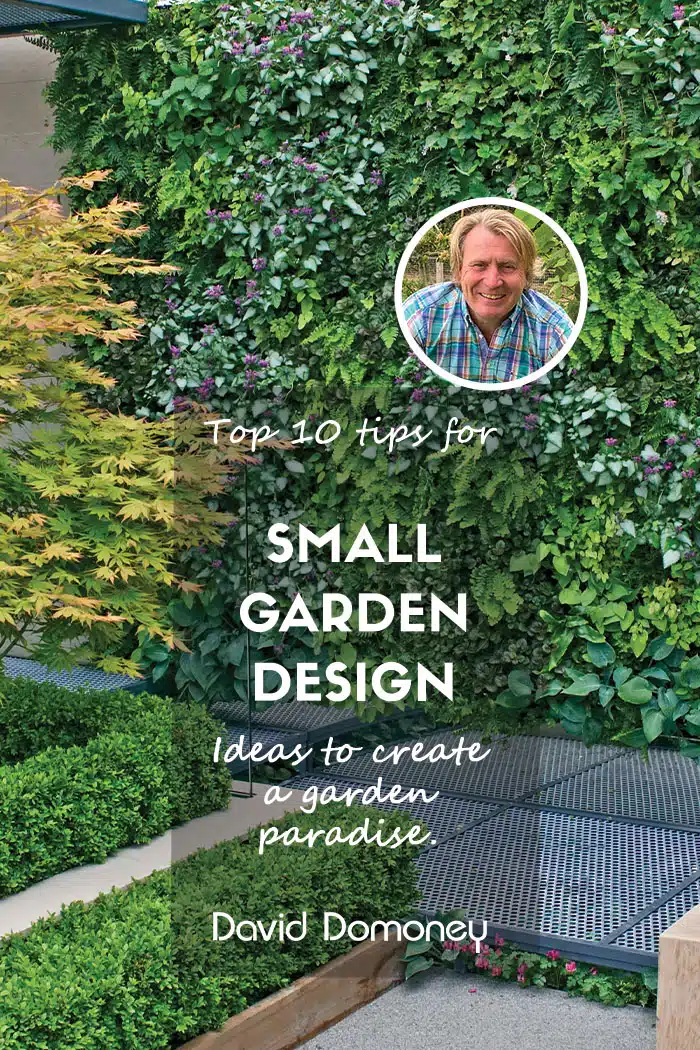
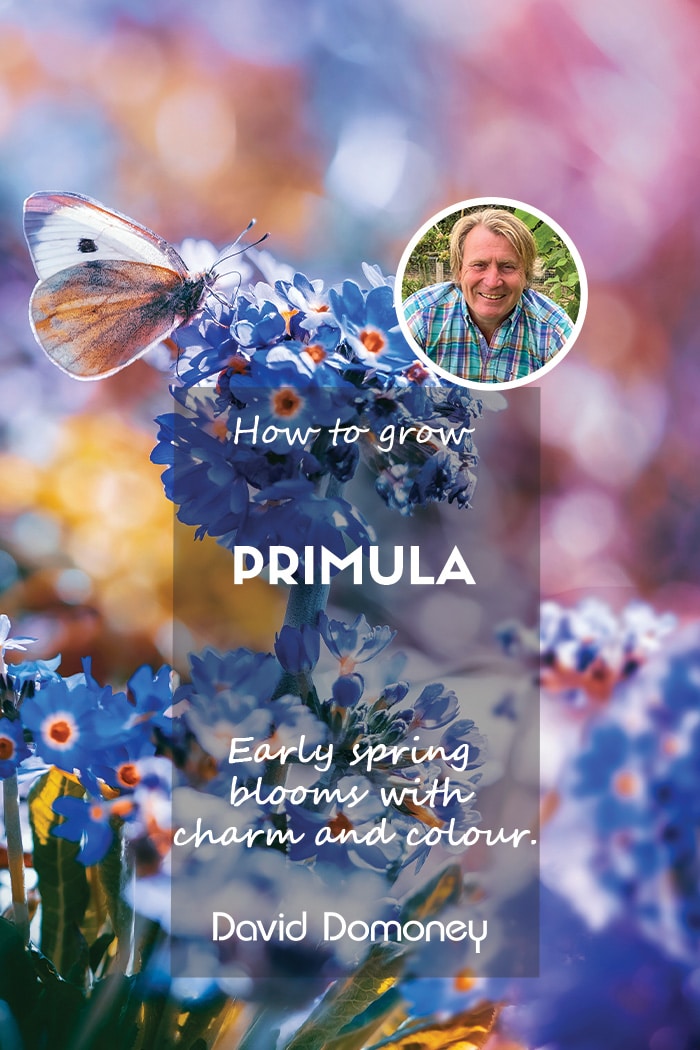
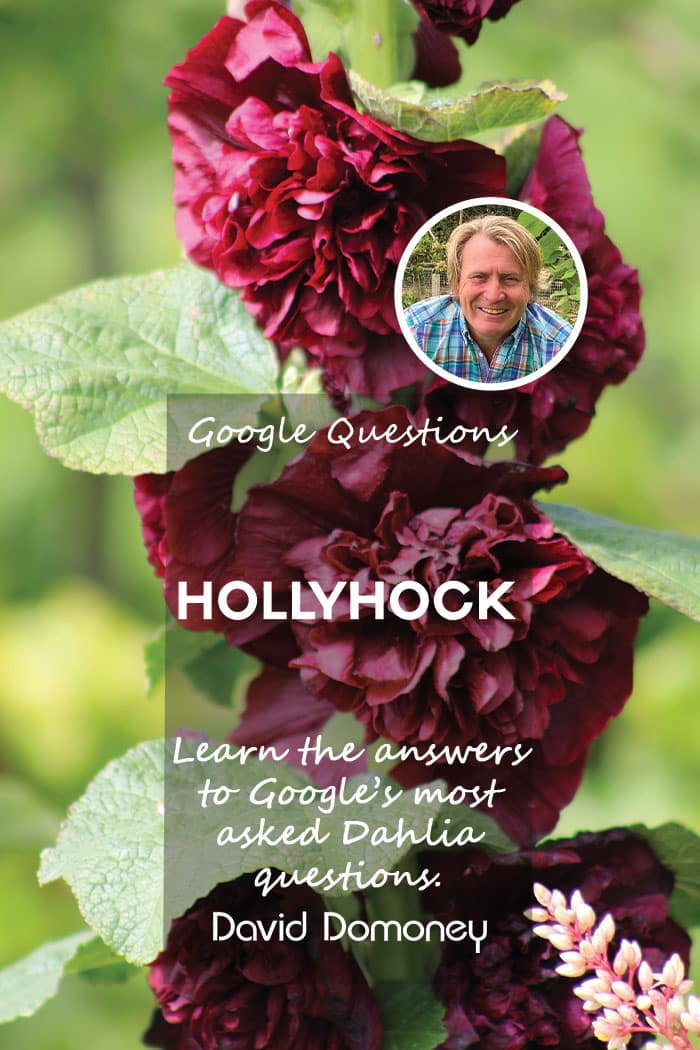
Leave A Comment